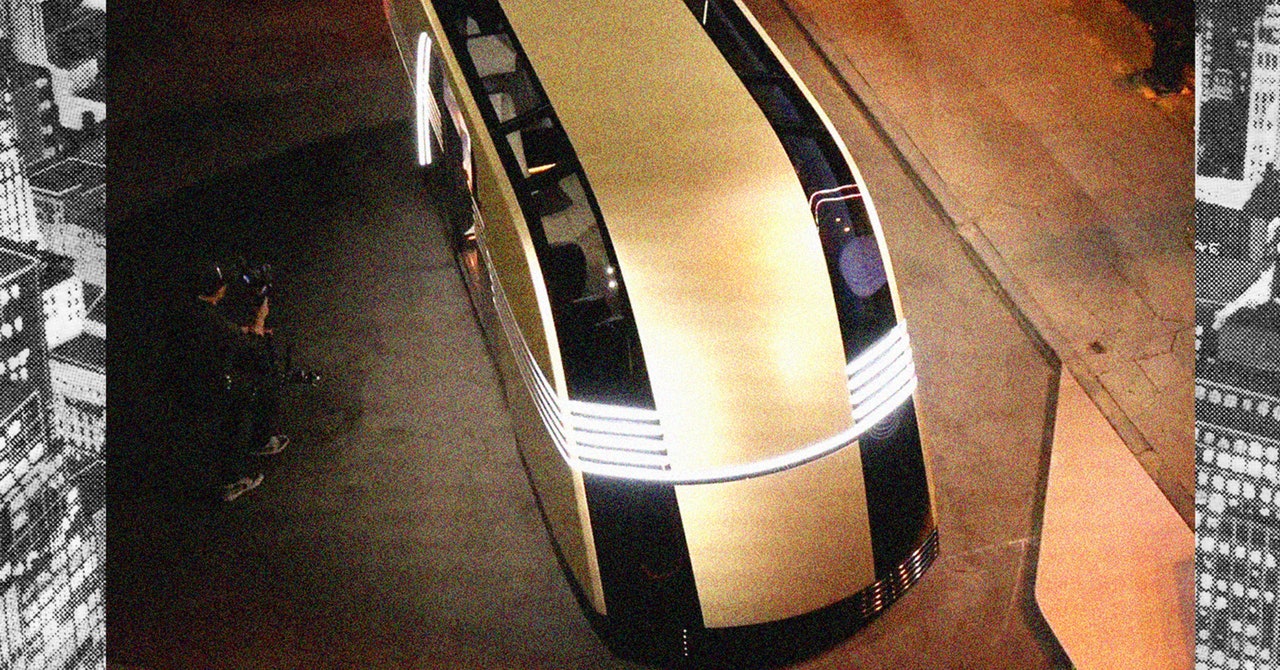
A glossy, gold automotive pulls as much as a bustling nook market, and a middle-aged couple alights. A girl eases a suitcase into the identical car’s spacious trunk. Later, a doodle and its grasp watch rocket movies within the entrance seat because the automotive eases across the neighborhood. No driver, no steering wheel, no pedals, no ready, no site visitors, no worries: This Tesla Cybercab drives itself.
That’s the imaginative and prescient proven off by Tesla CEO Elon Musk final week during a presentation broadcast from a set at Warner Bros. Studio, exterior of Los Angeles. Some 20 prototypes cruised the film lot as a collection of mocked-up photographs confirmed scenes of the idyllic tomorrow these glossy people-movers may usher us into. However specialists say Tesla’s courageous, new metropolis of the longer term will want quite a lot of robotaxis to remodel this hi-def rendering into actuality.
Whereas largely sidestepping the technical challenges of constructing self-driving know-how, Musk mainly centered on what an autonomous taxi service may imply. Beginning subsequent yr, he mentioned, Tesla homeowners ought to be capable of share their private automobiles by placing them into self-driving mode whereas they’re not utilizing them. It will be a kind of Uber-cum-Airbnb, the automotive off hustling for a paycheck whereas its proprietor hustles for their very own. A car continuously on the transfer may obviate the necessity for parking: “You’re taking the ‘-ing heaps’ out of parking heaps,” Musk quipped, as a presentation confirmed the asphalt expanses round LA’s notoriously trafficky Dodger and SoFi Stadiums reworked into inexperienced areas.
Briefly, Musk and Tesla argued that autonomy means extra nice lives for all. “A automotive in an autonomous world is sort of a little lounge,” Musk mentioned, noting a trip in a self-driving taxi would price lower than even a bus journey. “You are able to do no matter you need … and once you get out, you may be at your vacation spot. So yeah, it’s going to be superior.”
However make private self-driving automobiles too cheap, and too nice, and also you’ve received a city-sized downside in your arms. Cheaper, snug rides may result in much more site visitors and much more driving, says Adam Millard-Ball, a professor of city planning and the director of the UCLA Institute of Transportation Research. For proof, try the research of Uber’s and Lyft’s results on US cities; analysis suggests that, regardless of advertising guarantees in regards to the death of private car ownership, their introduction introduced extra city site visitors, not much less.
On this manner, low cost robotic taxis are a kind of double-edged sword, ending in additional city sprawl. “That’s going backward for the setting and for different city targets—whether or not it’s being bodily energetic or socially inclusive,” Millard-Ball says.
Taking the ‘-Ing Lot’ Out of Parking Lot?
Parks as an alternative of parking heaps might be a pleasant upside to self-driving. (Residences as an alternative of parking heaps may be actually cool.) But it surely’ll take extra than simply the swap to self-driving to get there. Anybody operating a self-driving automotive service hoping to make use of as little parking area as attainable must make a brilliant environment friendly community. That’s going to require folks to share autos. And folks don’t like to share.
“Folks love to maneuver in a protected and cozy manner,” says Andreas Nienhaus, who heads up the consultancy Oliver Wyman’s Mobility Discussion board. “Every time folks have the selection they usually don’t have the steering, they may decide into a private automotive.”







